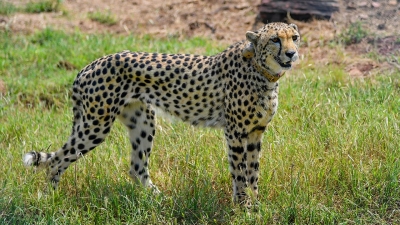
The year 2022 has seen quite a number of species getting reintroduced into the wild while some were discovered. Here are a few animals and birds that made to our list of animals in spotlight.
TASMANIAN TIGER
The 1930s saw the marsupial Tasmanian Tiger go extinct. Now efforts are being taken to resurrect the animal using gene-editing technology. The $15-million project hopes to reintroduce the animal to Tasmania, its native place. This attempt is expected to bring back the ecological balance in the region. Seen here is a stuffed Tasmanian tiger which was declared extinct in 1936.
SNOW CRABS
A huge collapse in the population of snow crabs was found after 11 billion snow crabs disappeared off the coast of Alaska. The crabs are disappearing in the Bering Sea and scientists believe that global warming could have resulted in the vanishing of these crabs. The sea was warmer in the previous years and this could have been the reason for the mass die-off. The decline in the numbers were noted when the survey was conducted in 2021. The survey result was confirmed this year too and it was ascertained that the crabs didn’t move to any other place, but disappeared. Their total numbers fell to about 1.9 billion in 2022, from 11.7 billion in 2018.
CHEETAH
The last cheetah died in India in 1947. And over 70 years after the animal was declared extinct in India, the country launched its ambitious programme “Project Cheetah to reintroduce cheetahs into the wild. Eight cheetahs including five females and three males were introduced as they were brought in from Namibia, southern Africa to Kuno National Park, Madhya Pradesh. Seen here is a cheetah after being released inside a special enclosure of the Kuno National Park in Madhya Pradesh.
IVORY-BILLED WOODPECKER
For long researchers believed that the ivory-billed woodpecker got extinct. But this year, a few researchers have claimed that the very bird which was declared extinct by the U.S. government was spotted in the forests of Louisiana. The researchers have claimed its spotting based on a series of grainy pictures and observations of the bird. Once relatively common, the numbers of ivory-billed woodpeckers started dropping with habitat loss due to human intervention and hunting. It is the largest woodpecker in the U.S.
APIS KARINJODIAN
Did you know that the last time a honey bee species was discovered in India was in 1798? And now, after a gap of 224 years, a new honey bee species endemic to Western Ghats has been discovered. Named Apis Karinjodian, the species has been classified as ‘near threatened’ by the International Union for Conservation of Nature (IUCN). With the new addition, now we have a total of 11 species of duster honey bees in the world.
WILD BISON
The year saw the wild bison get reintroduced to the U.K. for the first time in thousands of years. The species classified as near threatened was introduced into a woodland in Kent. The bison is being reintroduced as part of the Wilder Blean project. The idea for the reintroduction of the species is to restore natural landscapes. It is also a rewilding attempt to check if the animal’s behaviour can help transform a commercial pine forest into a natural forestland.
GREAT INDIAN BUSTARD
The Great Indian Bustard (GIB) came into focus once again this year when the Supreme Court of India asked if a Project GIB on the lines of Project Tiger could be launched to protect the bird. Found mainly in Rajasthan and Gujarat, the GIB has been labelled as critically endangered by the International Union for Conservation of Nature (IUCN). The SC bench asked this whilst hearing petitions on the situation of the bird and their deaths in large numbers due to electrocution from high-transmission power lines.
Picture Credit : Google




